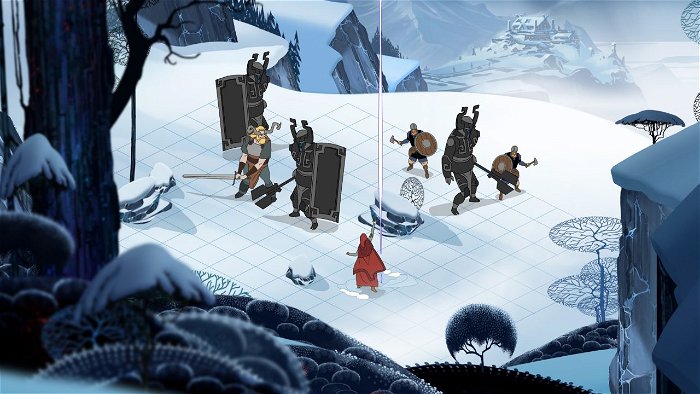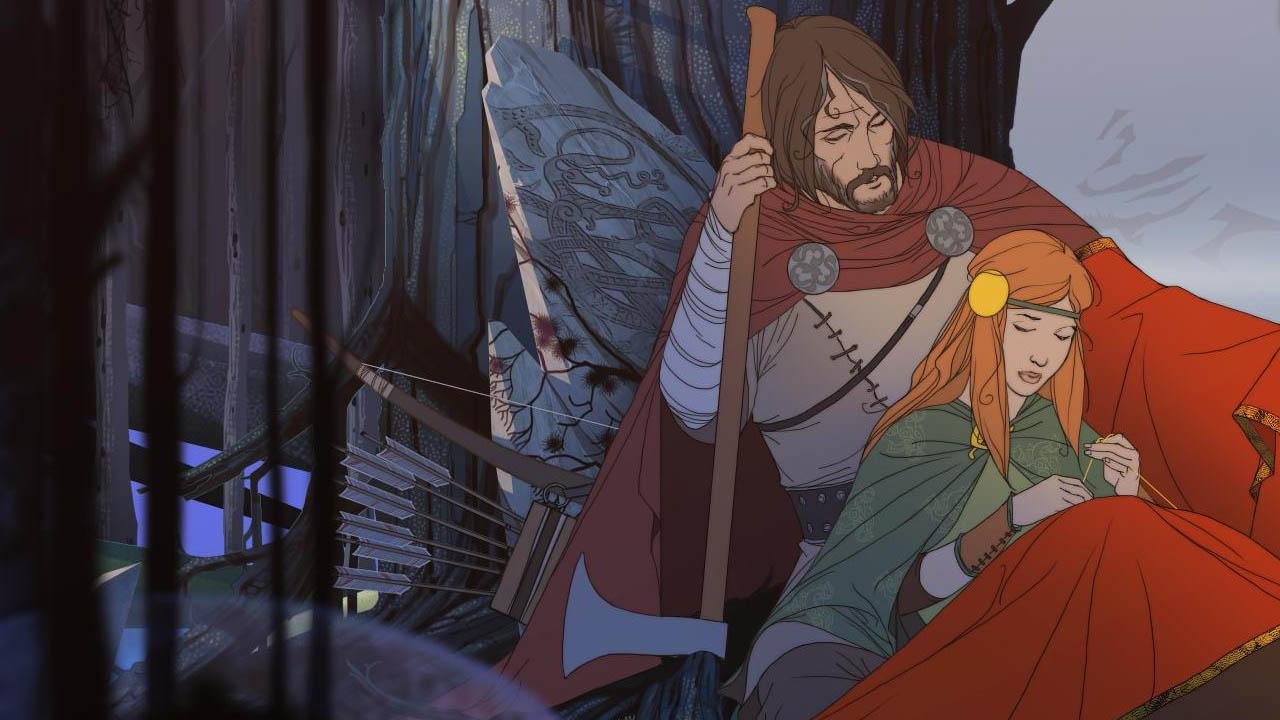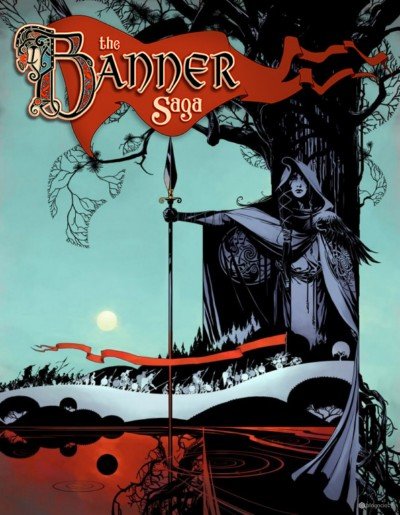The Banner Saga, like the ancient epics and legends it draws inspiration from, is about journeys. Just as Odysseus sailed home from the Trojan War, Tripitaka journeyed west from China, and Gilgamesh ventured to the Cedar Forest to fight a giant, Stoic’s fictionalized take on Scandinavian myth is a larger-than-life tale of perilous quests and arduous travel. This focus on reinvigorating the past — of inventing a whole new epic for the modern age — is what makes The Banner Saga unique, and what makes its characters, combat, and plot feel bigger and, ultimately, more important than they would otherwise seem.

From the very beginning of the game, The Banner Saga is grandiose. A group of giant men called varl, huge horns jutting from their heads and enormous hands clutching axes, arrive in a frozen city off the coast of an imagined Nordic landscape. They’ve come to link up with a band of human royalty and finally cement an alliance between their two mutually distrustful races. Though the story starts in linear fashion, the narrative moving forward through beautiful, hand-drawn scenes of conversation between the wide cast of characters, it quickly introduces a level of player choice that impacts what follows. Shortly after the humans and varl form a caravan and set off on their journey, The Banner Saga introduces situations where the player must decide how to handle events like bandit attacks, group infighting, and encounters with strangers met while on the road. Depending on the approach taken, people — including playable characters — may die, the group’s morale may lower or increase, and renown (the currency used to buy skills, items, and supplies) may be gained. While the main storyline will always unfold in a fairly specific manner, The Banner Saga‘s emphasis on player choice makes an already engrossing narrative feel extremely personal.

The tough decisions that must be made throughout the game wouldn’t be nearly as interesting if it wasn’t for Stoic’s excellent character work, however. The game’s story, with its invented place names and allusions to events that have taken place before its beginning, is initially confusing, but the cast of wonderfully illustrated and well-written characters anchors the plot. By the time the pieces have started to fall into place and the stakes are made clear— an invasion of stone monsters and the threat posed by a mysterious, mountain-cracking serpent — the audience has come to know the people living in The Banner Saga‘s world and care about their wellbeing. While the game doesn’t permanently remove characters once they’ve been killed in battle, watching a favourite cast member being taken out by a vicious bandit or injured due to a bad dialogue choice carries almost the same amount of weight as more hardnosed strategy titles like Fire Emblem and XCOM.

This is in large part due to great characterization, but also because of the life breathed into each battle through Stoic’s top-notch audiovisual design. The Banner Saga‘s battles are turn-based and see opposing troops wearing down one another’s colour-coded armour and strength/health metres in order to win. Each soldier has a unique fighting style that, once upgraded through an RPG-style statistics screen, allows players to create a specialized team of warriors that fits their preferred combat approach. A giant varl can swing his axe in a wide arc, hitting multiple opponents; the lone, wizardly mender is capable of calling down lightning bolts; and a nimble archer can leave traps that cause damage when an enemy walks through them. Despite a combat system that appears like a series of math puzzles at first glance — the effectiveness of each attack involves a bit of quick arithmetic involving the sum of each warrior’s health/strength and armour rating numbers — The Banner Saga‘s extremely different character classes encourage strategic experimentation.
At first blush the rows of battlefield movement tiles, floating numbers, and menu descriptions may make combat sequences seem like relatively sterile affairs in contrast to the minimalist user interface shown during travel and dialogue sequences. Fortunately, the crisp art style found throughout the rest of the game lends itself well to turn-based fights, too. Weapons thunk into enemies with a real sense of weight, the characters move through attack animations with impressive fluidity, and a score full of pounding drums lends a sense of urgency to each encounter. The Banner Saga‘s presentation is exceptional during the entire game, but its ability to make combat that could have easily resembled a spreadsheet feel truly alive is outstanding.
To read the full review of The Banner Saga, check out issue #31 of CGMagazine.






